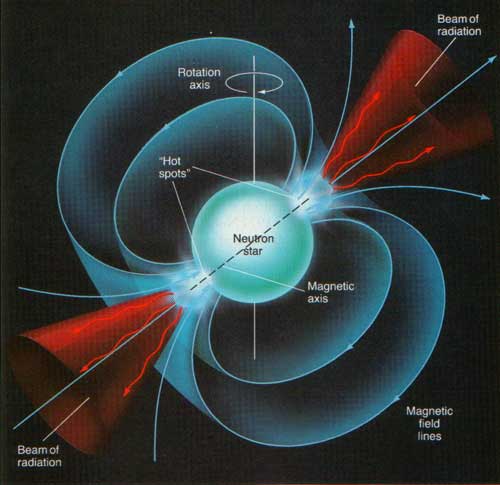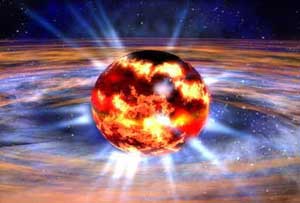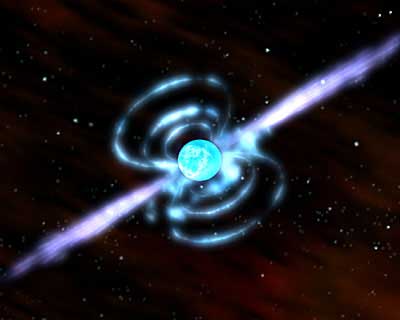In 1967, astronomers suddenly received a strange radio wave. This wave emitted signals every 1-2 seconds, resembling a heartbeat. It was thought to be a cosmic call, a sensation of the time. Later, British scientist Anthony Hewish clarified the nature of this radio wave. It was emitted from a previously unknown celestial object called a pulsar. This discovery earned him the Nobel Prize in Physics in 1974.

Model of the radio waves emitted by neutron stars (Image: stardate.org)
 |
|
Scientist Anthony Hewish receiving the Nobel Prize in Physics in 1974 (Image: physik.uni-frankfurt) |
Currently, 300 pulsars have been discovered, all located within the Milky Way galaxy. The Crab Nebula also contains a pulsar.
Pulsars are one of the four major astronomical discoveries of the 1960s (the other two being the cosmic microwave background radiation and organic molecules in space). Pulsars emit signals continuously and intermittently with remarkable stability, their timing accuracy rivaling that of electronic clocks. The periods vary from one pulsar to another, with some lasting up to 3.7 seconds and others as short as 0.033 seconds.
Pulsars are rotating neutron stars. Neutron stars are incredibly small, typically only about 10 kilometers in diameter, yet they weigh as much as the Sun, making them denser than white dwarf stars.
The progenitors of neutron stars are usually massive stars that exceed the mass of the Sun. During their collapse, a tremendous pressure alters their material structure. Not only are the atomic shells destroyed, but the cores are also transformed, with protons and neutrons compressed together. Electrons are forced to merge with protons, resulting in the formation of neutrons. Ultimately, the neutrons condense together to form a neutron star. On a neutron star, a cubic centimeter of material weighs about one billion tons.
After a massive star collapses into a neutron star, its rotation rate increases rapidly, completing several to tens of rotations per second. Simultaneously, the neutron star becomes a “giant magnet”, with part of this “giant magnet”
 |
|
Energy radiation of neutron stars |
broadcasting signals outward. When it spins at such high speeds, it resembles a lighthouse, sweeping radio waves towards Earth in a regular and continuous manner. When the broadcasting section faces Earth, we receive signals; when it rotates away from us, the signals are lost. This interruption in the received signals is known as the “lighthouse effect.”
The energy radiated by a neutron star is one million times greater than that of the Sun. The total energy it emits in one second, if converted to electrical energy, would be sufficient to power Earth for billions of years.
Neutron stars are not the final state of a pulsar; they will evolve further. Due to their extremely high temperatures, they consume energy rapidly, resulting in lifespans of only a few hundred million years. Once their energy is depleted, neutron stars will become black dwarfs, no longer emitting light.

(Image: tqnyc)

















































